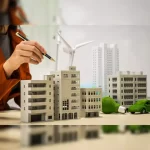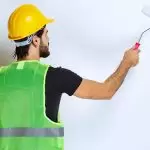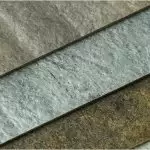Timber is a very versatile material which can be worked with and imparts a feeling of warmth to the building which makes it one of the favorite cladding materials. It is widely being used as a style statement to create the face of modern and aesthetically pleasing buildings.
Post your Requirement

Hardwood is a 100% natural material, eco-friendly and sustainable building option. The green movement highly supports and recommends the use of wood as it is biodegradable; less energy is used in customizing this cladding material.
Suggested Read: Different Types of Cladding Material
Timber requires constant protection and regular maintenance so as to prevent fast deterioration .However some issues can affect the longevity and the finish of hardwood cladding
- Being a natural material timber gets weathered with time. Some part of cladding can have an increased exposure to UV light while some part of the cladding might be in shade. These can result in inconsistent weathering and patches in the cladding.
- In case there is increased exposure to wet conditions there is possibility of absorption of water and growth of algae and fungi. The wood can become prone to termites.
- Timber is a natural product, it has a tendency to absorb water when exposed during the monsoon and release it during summer. This results in constant swelling and shrinking of wood.
The cost of purchase and installation of timber is expensive hence adequate care and maintenance needs to be taken. Timber should be regularly repaired within 2 to 5 years, the process is time consuming but it is worth the effort to preserve the classic and natural appeal of wood. The maintenance tips are –
- Timber cladding can shrink during summer and expand during monsoon; the installer should take this into consideration and leave adequate gaps for expansion while installing timber siding on the exteriors.
- Be selective in cladding the exteriors as the timber exposed to sunlight will fade faster than timber in the shaded area of the building. Design it in such a way that the timber weathers consistently.
- Use galvanized iron or high quality SS screws for fixing the cladding. Timber produces acetic acid naturally which can rust and corrode the screws if they are not of good quality.
- A protective coating should be applied on the timber which is water and UV resistant and at the same time shall allow the wood to breathe. Penetrating coating is better because it protects it from UV light and rotting from algae or termites. Avoid opaque paint because it shall tend to crack due to constant expansion and shrinkage of the wood. Paint may also form a film which tends to form bubbles.
- Do not install the cladding during monsoon or extreme summers.
- As a regular cleaning process just use warm soapy water with a brush having soft bristles to remove the dust caused by pollution.
- The longevity of hardwood is much better than softwood.
- Use treated timber as it is more durable than untreated timber.
- Be careful in preventing the trees or foliage from touching the building as water from the plants or trees can enter the pores of the timber and create cracks.
- Timber with cracks should be replaced with a piece having matching color and texture.























Post A Comment